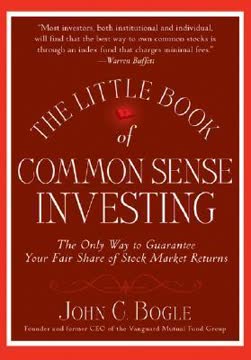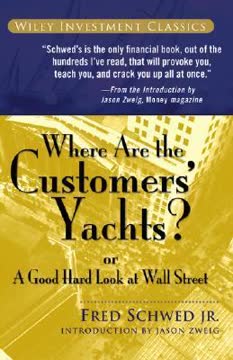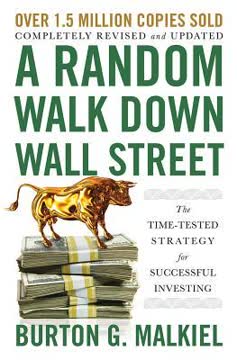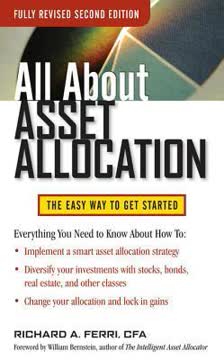Key Takeaways
1. Embrace index funds for low-cost, diversified investing
Index investing is an investment strategy that Walter Mitty would love. It takes very little investment knowledge, no skill, practically no time or effort-and outperforms about 80 percent of all investors.
Simplicity and effectiveness. Index investing offers a straightforward approach to building wealth. By purchasing funds that track broad market indices, investors gain instant diversification across hundreds or thousands of companies. This strategy eliminates the need for stock picking or market timing, which often lead to underperformance.
Cost advantage. Index funds typically have much lower expense ratios than actively managed funds. This cost difference compounds over time, allowing investors to keep more of their returns. For example, a 1% difference in fees can result in hundreds of thousands of dollars in lost wealth over a lifetime of investing.
Benefits of index investing:
- Broad market exposure
- Low costs
- Tax efficiency
- Consistent performance relative to the market
2. Start investing early and consistently to harness compound interest
The most important single piece of investment wisdom I can give to you.
Power of compounding. Starting to invest early in life allows your money to grow exponentially through compound interest. Even small amounts invested regularly can grow into substantial sums over decades.
Consistent investing. Regular contributions, such as through a 401(k) or automatic investment plan, take advantage of dollar-cost averaging. This strategy helps smooth out market volatility and removes the emotional aspect of trying to time the market.
Example of compounding:
- $5,000 invested annually at 8% return
- After 10 years: $78,227
- After 20 years: $247,115
- After 30 years: $611,729
3. Asset allocation is the cornerstone of successful investing
Asset allocation is critically important; but cost is critically important, too-All other factors pale into insignificance.
Balancing risk and return. Asset allocation involves dividing your investment portfolio among different asset categories, such as stocks, bonds, and cash. This strategy aims to balance risk and reward according to an individual's goals, risk tolerance, and investment horizon.
Diversification benefits. Proper asset allocation provides diversification, which can reduce portfolio volatility and protect against significant losses in any single investment or asset class. It also allows investors to potentially benefit from growth in various sectors of the economy.
Key factors in determining asset allocation:
- Investment goals
- Time horizon
- Risk tolerance
- Age and life stage
4. Keep costs low to maximize returns over time
Every extra dollar of expense you pay is skimmed from your investment capital.
Impact of fees. High investment costs, including management fees, transaction costs, and taxes, can significantly erode returns over time. Even small differences in expense ratios can result in substantial differences in wealth accumulation over long periods.
Focus on controllable factors. While investors cannot control market performance, they can control the costs associated with their investments. Choosing low-cost index funds and minimizing trading activity are effective ways to keep expenses down.
Ways to reduce investment costs:
- Choose low-cost index funds or ETFs
- Minimize portfolio turnover
- Invest in tax-efficient funds for taxable accounts
- Avoid high-commission investment products
5. Understand and manage your emotions when investing
Investing has a whole new set of rules, and if we are to be successful, we need to play by these new rules.
Emotional pitfalls. Fear and greed are powerful emotions that can lead investors to make irrational decisions, such as selling during market downturns or chasing performance. Recognizing these emotional triggers is crucial for long-term investing success.
Disciplined approach. Developing a systematic, rules-based approach to investing can help mitigate the impact of emotions on decision-making. This includes sticking to a predetermined asset allocation and rebalancing schedule, regardless of market conditions.
Common emotional biases in investing:
- Recency bias
- Confirmation bias
- Loss aversion
- Overconfidence
6. Tune out market noise and focus on long-term strategy
All forecasting is noise.
Short-term unpredictability. Financial media often focuses on short-term market movements and predictions, which are largely unpredictable and irrelevant for long-term investors. This "noise" can lead to poor decision-making and unnecessary trading.
Long-term perspective. Successful investing requires focusing on long-term goals and maintaining a consistent strategy through market ups and downs. Historical data shows that the stock market has consistently delivered positive returns over long periods, despite short-term volatility.
Strategies for tuning out noise:
- Limit consumption of financial news
- Focus on your personal financial goals
- Stick to a predetermined investment plan
- Avoid reacting to short-term market movements
7. Protect your assets with proper insurance coverage
Insurance is for protection and investing is for wealth building. Don't confuse or mix the two.
Risk management. Proper insurance coverage is crucial for protecting your assets and financial well-being. This includes life, health, disability, property, and liability insurance. The right coverage can prevent a single unfortunate event from derailing your long-term financial plans.
Appropriate coverage. It's important to assess your personal situation and choose insurance policies that provide adequate protection without overpaying for unnecessary coverage. Regular reviews of your insurance needs are essential as your life circumstances change.
Key types of insurance to consider:
- Life insurance (if you have dependents)
- Health insurance
- Disability insurance
- Homeowners/renters insurance
- Auto insurance
- Umbrella liability policy
8. Plan for retirement by balancing withdrawals and longevity
Keep your fixed living expenses as low as possible.
Withdrawal strategies. Determining a sustainable withdrawal rate from your retirement portfolio is crucial for ensuring your savings last throughout retirement. The "4% rule" is a common starting point, but individual circumstances may require adjustments.
Longevity risk. With increasing life expectancies, retirees must plan for potentially longer retirements. This may involve a combination of strategies, such as delaying Social Security benefits, considering part-time work in retirement, or purchasing longevity insurance.
Factors affecting retirement planning:
- Expected retirement duration
- Inflation
- Healthcare costs
- Market performance
- Desired lifestyle in retirement
9. Prioritize tax-efficient investing strategies
Every dollar we pay in commissions, fees, expenses, and so on is one dollar less that we receive from our investment.
Tax impact on returns. Taxes can significantly reduce investment returns over time. Implementing tax-efficient investing strategies can help maximize after-tax returns and preserve wealth.
Tax-advantaged accounts. Utilizing tax-advantaged accounts such as 401(k)s, IRAs, and Roth IRAs can provide significant tax benefits. Understanding the tax implications of different account types and investment vehicles is crucial for optimizing overall portfolio performance.
Tax-efficient investing strategies:
- Use tax-advantaged accounts when possible
- Hold tax-efficient investments in taxable accounts
- Consider municipal bonds for taxable accounts
- Implement tax-loss harvesting when appropriate
10. Rebalance your portfolio regularly to maintain risk levels
Rebalancing forces us to sell high and buy low.
Maintaining target allocation. Over time, different asset classes will perform differently, causing your portfolio to drift from its target allocation. Regular rebalancing helps maintain your desired risk level and can potentially improve returns.
Disciplined approach. Rebalancing should be done systematically, either on a set schedule (e.g., annually) or when asset allocations drift beyond predetermined thresholds. This disciplined approach helps remove emotion from the process and ensures consistent implementation.
Rebalancing methods:
- Calendar-based (e.g., annually, semi-annually)
- Threshold-based (e.g., when allocations drift by 5% or more)
- A combination of both approaches
Last updated:
FAQ
What's The Bogleheads' Guide to Investing about?
- Investment Philosophy: The book outlines a simple, low-cost, and passive investment strategy based on John C. Bogle's principles, focusing on index funds and long-term investing.
- Target Audience: It caters to both novice and experienced investors, aiming to demystify investing and make it accessible to everyone.
- Structure: Divided into two parts, the first covers the essentials of successful investing, while the second provides strategies to keep investors on track.
Why should I read The Bogleheads' Guide to Investing?
- Proven Strategies: Offers time-tested strategies emphasizing starting early, investing regularly, and keeping costs low.
- Expert Insights: Written by experienced investors, it distills wisdom from the Bogleheads community known for its rational approach.
- Practical Guidance: Provides actionable steps and checklists for readers to implement immediately, helping them take control of their financial future.
What are the key takeaways of The Bogleheads' Guide to Investing?
- Start Early and Regularly: Emphasizes the importance of beginning to invest as soon as possible and making regular contributions.
- Keep Costs Low: Advocates for low-cost index funds, highlighting that investment costs significantly impact returns.
- Diversification and Asset Allocation: Stresses the need for a diversified portfolio and a well-thought-out asset allocation strategy.
What specific investment strategies are recommended in The Bogleheads' Guide to Investing?
- Index Fund Investing: Advocates for investing primarily in index funds to minimize costs and maximize returns over time.
- Asset Allocation: Encourages determining asset allocation based on risk tolerance, investment goals, and time horizon.
- Tax Efficiency: Recommends tax-managed funds and strategies to minimize tax liabilities, including using tax-advantaged accounts.
How does The Bogleheads' Guide to Investing define a Boglehead?
- Investment Philosophy: A Boglehead follows John Bogle's philosophy, focusing on low-cost, passive investing strategies.
- Community Support: The Bogleheads community is supportive, sharing knowledge and experiences to foster learning and growth.
- Practical Approach: Prioritizes simplicity and practicality, avoiding complex financial products and strategies.
What are the best quotes from The Bogleheads' Guide to Investing and what do they mean?
- "You can’t control the market, but you can control your costs.": Focus on minimizing fees and expenses rather than predicting market movements.
- "The best predictor of future performance is past performance.": Historical performance provides insights but is not a guarantee of future results.
- "Investing is about buying assets, holding them for long periods of time, and reaping the harvest years later.": Highlights the importance of patience and discipline in achieving financial goals.
How does The Bogleheads' Guide to Investing suggest managing emotions while investing?
- Mastering Your Emotions: Emotional control is crucial; stick to your investment plan and avoid impulsive decisions.
- Tune Out the Noise: Ignore market "noise" and focus on long-term goals to prevent emotional reactions.
- Stay Disciplined: Regular contributions and rebalancing help mitigate emotional decision-making.
What is the importance of asset allocation according to The Bogleheads' Guide to Investing?
- Risk Management: Asset allocation is crucial for managing risk by diversifying across different asset classes.
- Return Optimization: A well-thought-out strategy can optimize returns based on risk tolerance and investment goals.
- Long-Term Success: Asset allocation significantly influences long-term investment success, helping achieve financial objectives.
How can I determine my risk tolerance as suggested in The Bogleheads' Guide to Investing?
- Self-Assessment: Conduct a self-assessment to understand your comfort level with market fluctuations.
- Sleep Test: Use the "sleep test" to evaluate if your asset allocation is suitable for you.
- Adjusting Allocations: Adjust your portfolio if it causes anxiety, ensuring alignment with your emotional comfort level.
What are some tax-efficient investment strategies mentioned in The Bogleheads' Guide to Investing?
- Tax-Advantaged Accounts: Utilize accounts like IRAs and 401(k)s for tax-deferred growth.
- Fund Placement: Place tax-inefficient investments in tax-deferred accounts and tax-efficient ones in taxable accounts.
- Tax-Loss Harvesting: Sell losing investments to offset gains and reduce taxable income.
What are some common mistakes investors make according to The Bogleheads' Guide to Investing?
- Chasing Performance: Avoid chasing hot funds or stocks based on recent performance, which can lead to buying high and selling low.
- Market Timing: Attempting to time the market is risky; a consistent investment approach is advocated.
- Neglecting Costs: Overlooking fees and expenses can erode returns; choose low-cost investment options.
How can I get involved with the Bogleheads community after reading The Bogleheads' Guide to Investing?
- Online Forums: Join the Vanguard Diehards Forum on Morningstar.com to share insights and support.
- Local Chapters: Participate in local Bogleheads chapters for networking and community engagement.
- Annual Gatherings: Attend annual meetings to learn from experts and discuss investment strategies.
Review Summary
The Bogleheads' Guide to Investing receives mostly positive reviews for its comprehensive, accessible approach to long-term investing. Readers appreciate its focus on low-cost index funds, diversification, and passive investing strategies. The book is praised for its practical advice on asset allocation, tax efficiency, and retirement planning. Some criticize its US-centric focus and repetitive content. Many readers recommend it as an excellent resource for beginners, though some suggest it's better suited for those with basic financial knowledge. Overall, reviewers find it a valuable guide to building a sound investment strategy.
Similar Books










Download PDF
Download EPUB
.epub digital book format is ideal for reading ebooks on phones, tablets, and e-readers.






